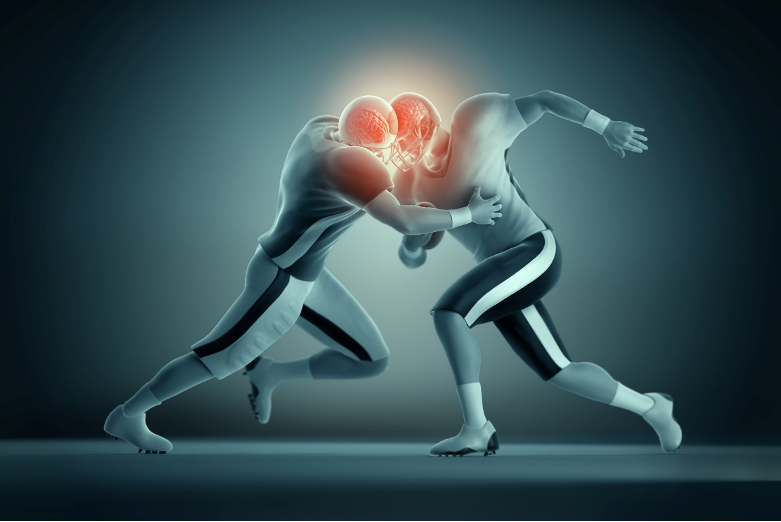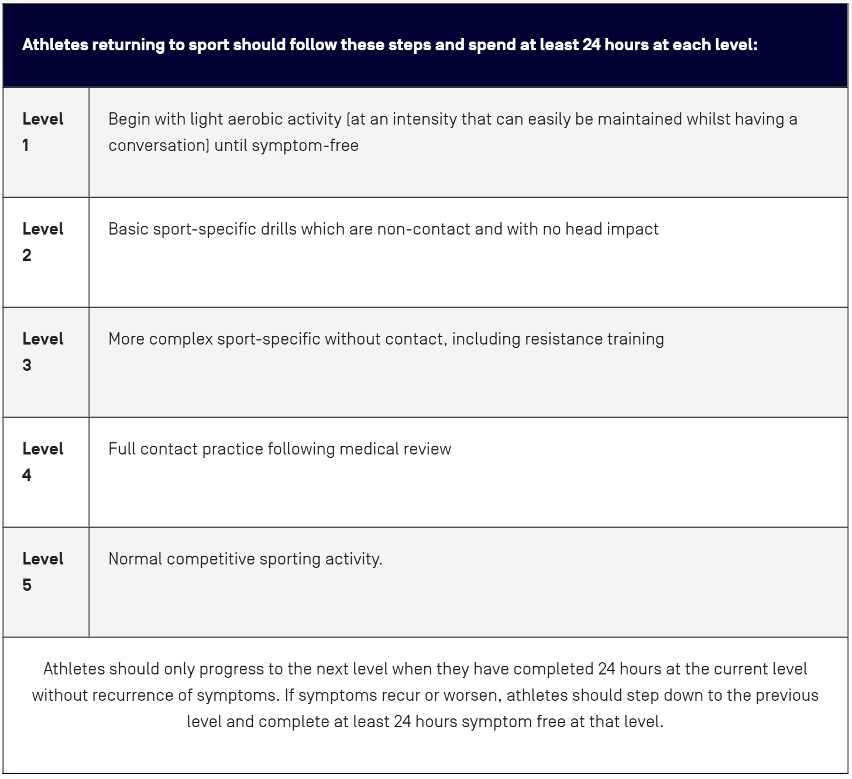
Returning to Sport Following a Concussion
By Jack Nuske
01/03/2025
Concussions are a serious injury that often happen in contact sports. They are typically caused by a blow to the head but can sometimes result from a whiplash-like movement too. They can be dangerous as symptoms may develop hours or days after the actual injury event.

Obvious signs and symptoms include headaches, a loss of consciousness, confusion/disorientation, foggy memory, difficulty concentrating and visual disturbances.
More critical signs and symptoms that should be monitored for are: neck pain, vomiting, weakness/tingling/burning in limbs, seizures, thunderclap headaches, progressive confusion or a deteriorating conscious state.
Those aged 18 years and younger should not return to contact sports/activities any less than 14 days from when all symptoms have cleared. A graded return, based on symptom-free criteria, should be followed when returning to physical activity. If your sporting club requires clearance before returning to sport, then this must come from a medical practitioner (i.e., your GP). Once cleared however, physiotherapists can help with returning the athlete back to their desired sport by developing a graded exercise program and monitoring for symptoms. Coaches and parents should not pressure a player to return too quickly.
The below image shows the Australian Sports Commission (ASC) guidelines for an athlete returning to sport following a concussion. For further information, visit their website here.
For sport specific guidelines, follow this link: Concussion in Sport

If you have any questions or would like to book an appointment, please call (02) 4268 4884, or send an email to info@physicaledgehealth.com.
 Instagram
Instagram Social | News
Social | News




